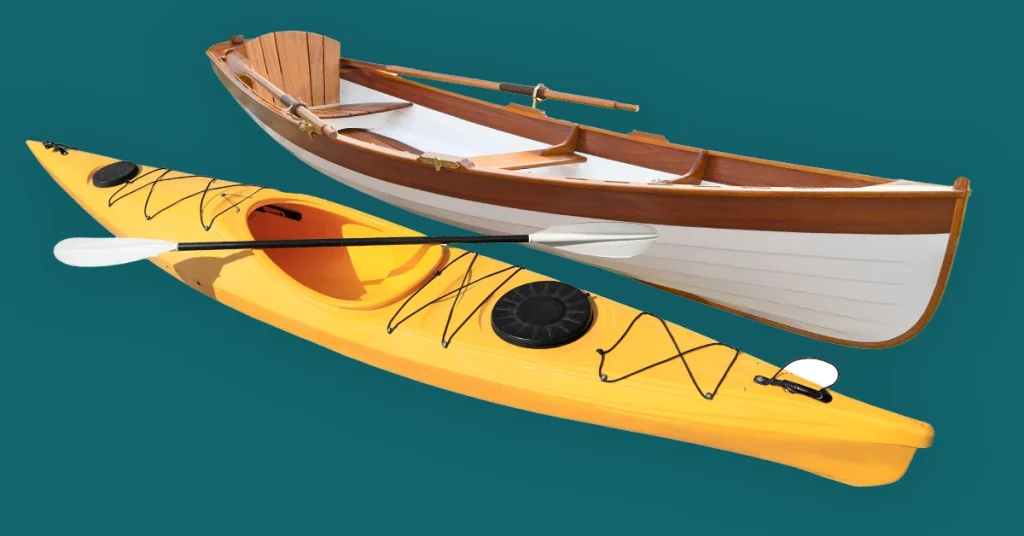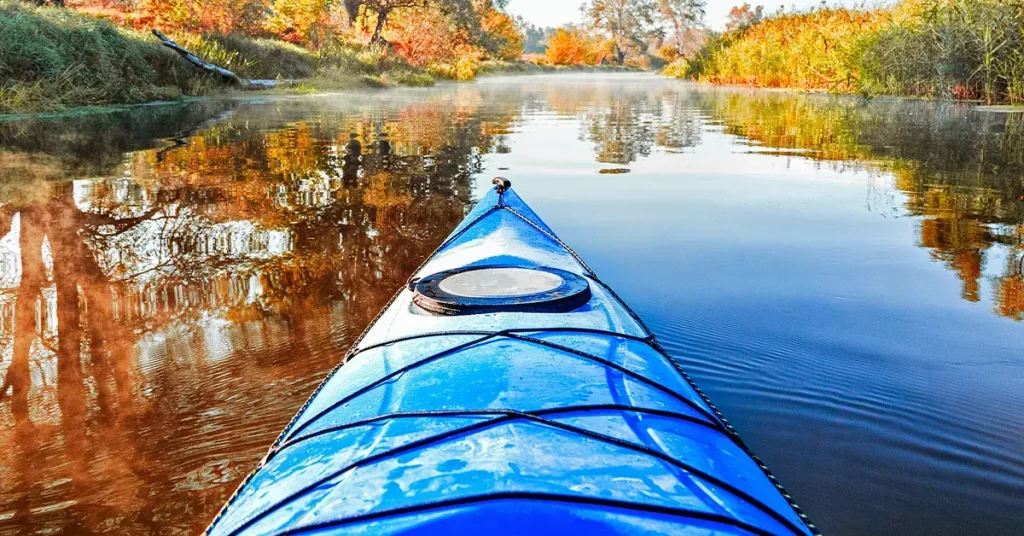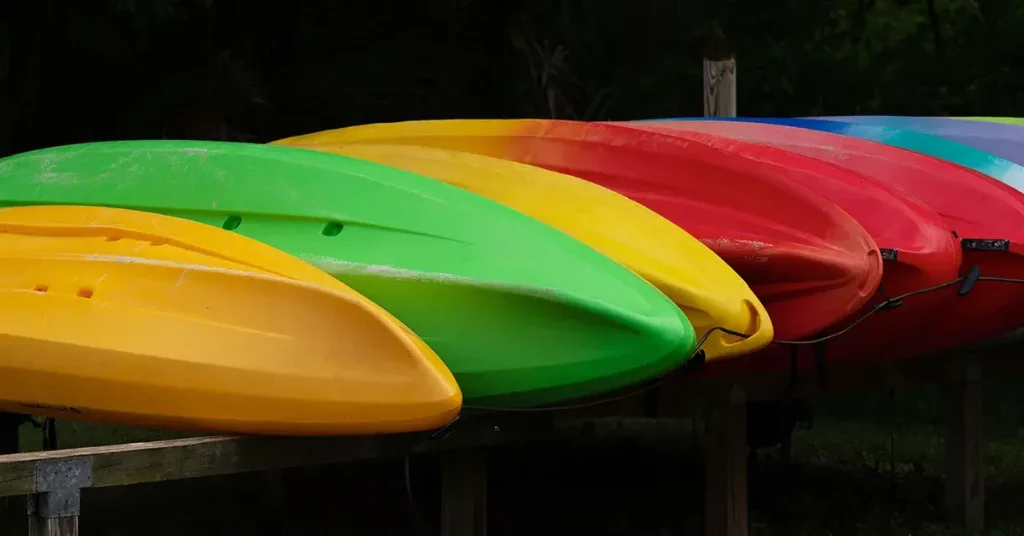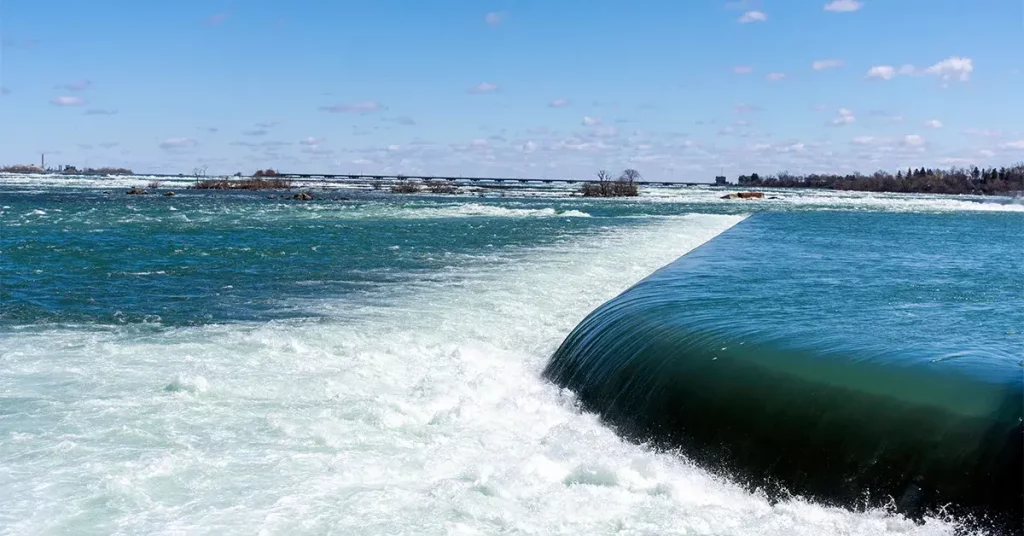Canoeing and kayaking are popular water sports that are physically demanding yet extremely fun. But what are the differences of canoeing vs. kayaking?
Both of these boats have existed for thousands of years. The basic concept is that you kneel or sit in the boat and use a single-bladed canoe paddle to propel yourself through the water when canoeing.
Although both of these boats have the same basic concept, there are differences between the two. Let’s take a look at what these differences are.
What Is the Difference Between a Kayak and a Canoe?
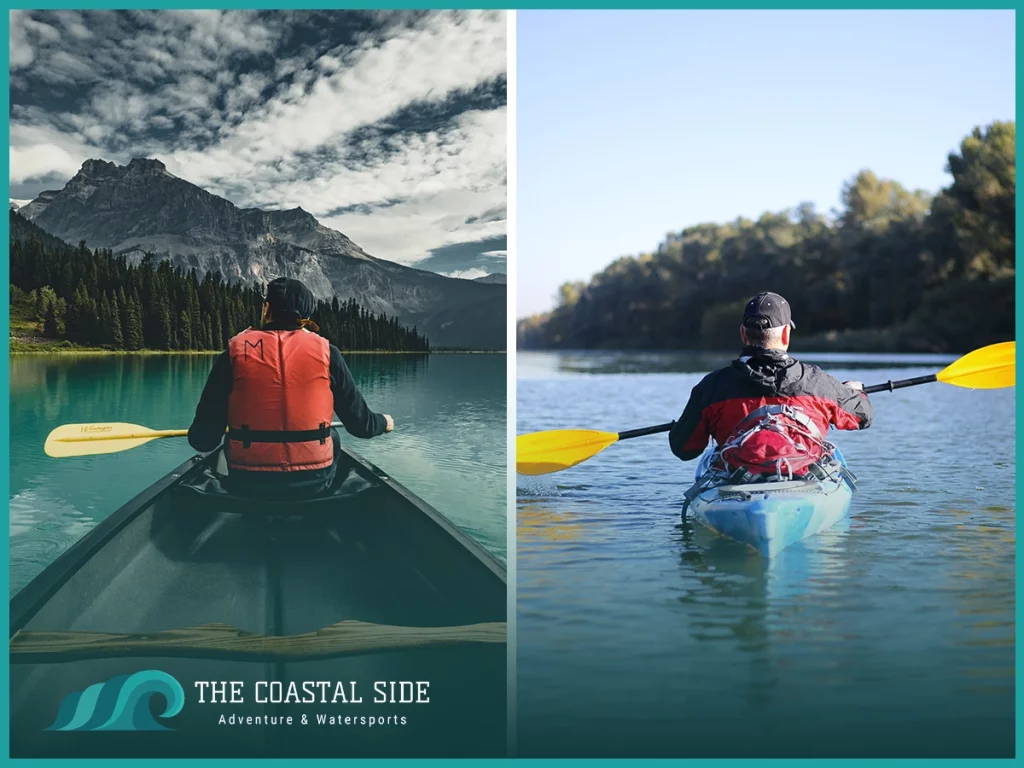
Canoeing and kayaking are paddle sports that use boats to travel on water. A typical canoe is larger and can hold more people than kayaks. Recreational canoes are also more stable than kayaks, making them ideal for beginners or those who want a soothing water experience.
On the other hand, it takes more effort to get in and out of kayaks than it does for canoes. Experienced paddlers find kayaks easier to handle. Kayaks are also narrower and less stable than canoes but faster and more maneuverable.
Kayaks cannot carry as much gear as canoes because of the enclosed cockpit. Many kayaks offer a small amount of personal storage. Go for a touring kayak for more storage space because they’re designed for longer trips.
What Is Canoeing?
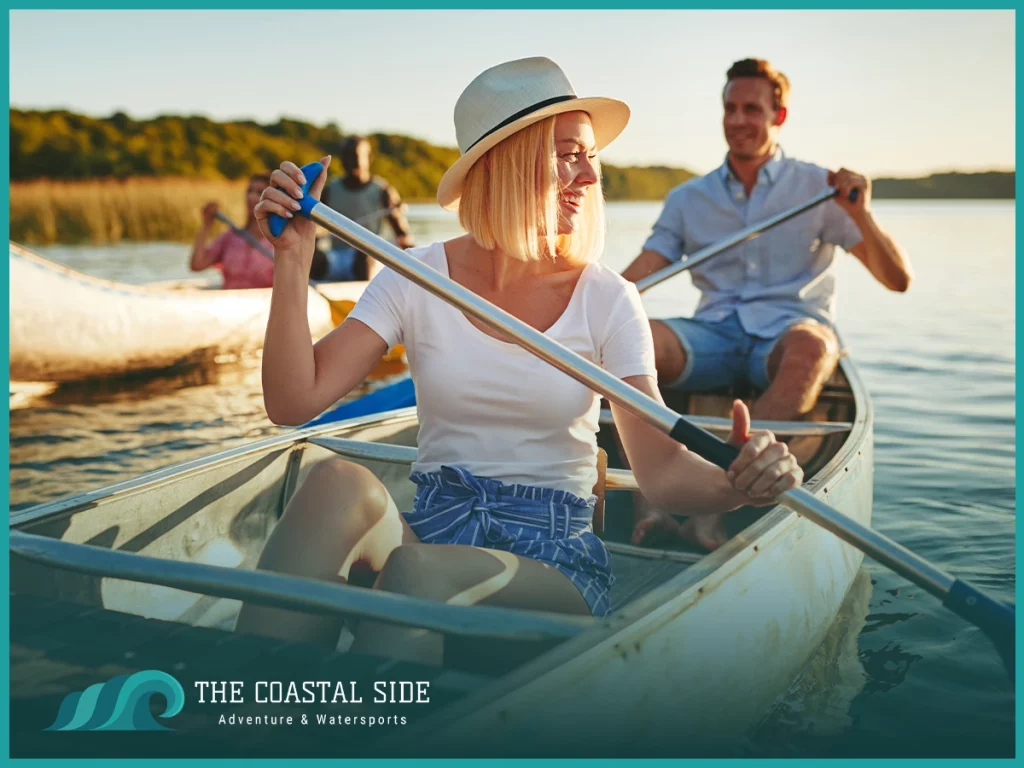
Canoes are open-top boats that use a single-bladed paddle. The sides of a canoe are higher than a kayak, which makes canoeing a drier activity. When paddling a canoe, you typically have one person sit on a cushion in the front of the boat and the other sits near the rear. Both participants paddle to make the boat move through the water, paddling in an alternating motion to go straight or both from one side or the other at the same time to turn the boat.
Canoe Features
- Canoes are wider than kayaks, making them more stable and slower. A paddler’s sitting position is on top of bench seats or kneeling.
- Canoes can hold more people and equipment than recreational kayaks. They are perfect for family trips and have ample room for carrying camping gear.
- Recreational canoes are typically better for beginner paddlers or those who want a calm water experience. Canoe enthusiasts usually enjoy a more relaxed activity.
What Are the Types of Canoes?
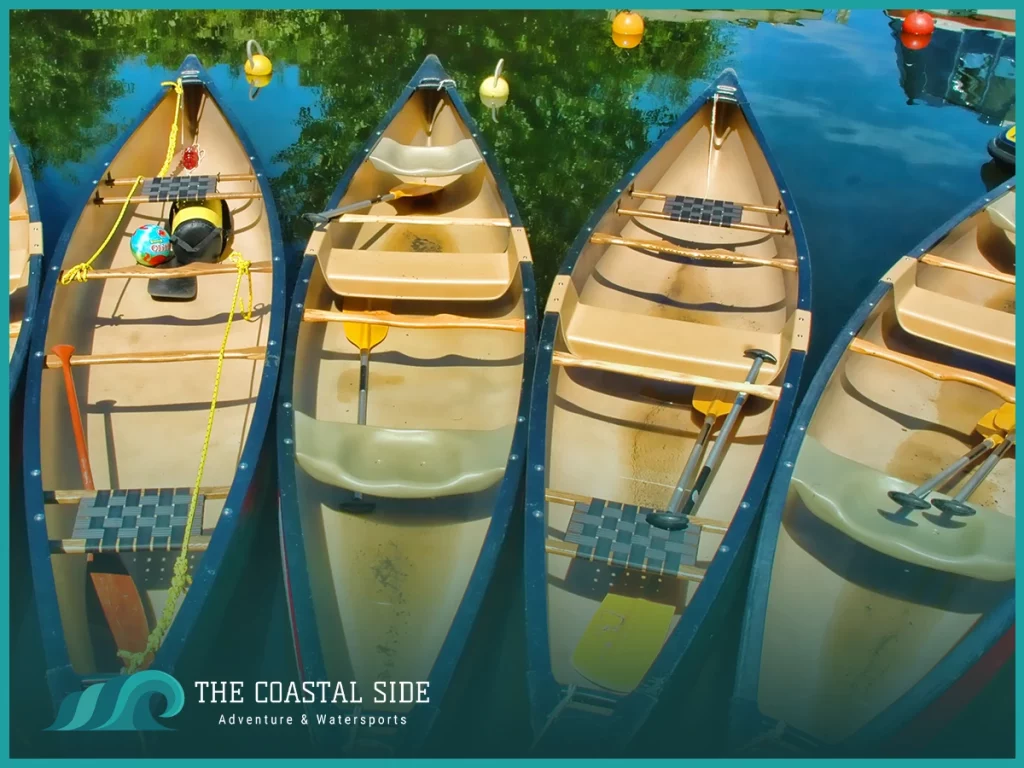
There are four main categories of canoes:
Recreational Canoes
These are the most popular type of canoe, designed for flat-water paddling on a calm lake or slow-moving rivers.
Square Stern Canoes
A square stern allows these canoes to work with a motor.
Whitewater Canoes
These are best for paddling on rivers with whitewater rapids. They are shorter and more maneuverable than other canoe types, making them better for experienced paddlers.
Racing Canoes
These exist for speed and efficiency. They are long and narrow, making them less stable than other canoe types. Racing canoes tend to have flotation devices attached.
What Are Some Pros and Cons of Canoeing?
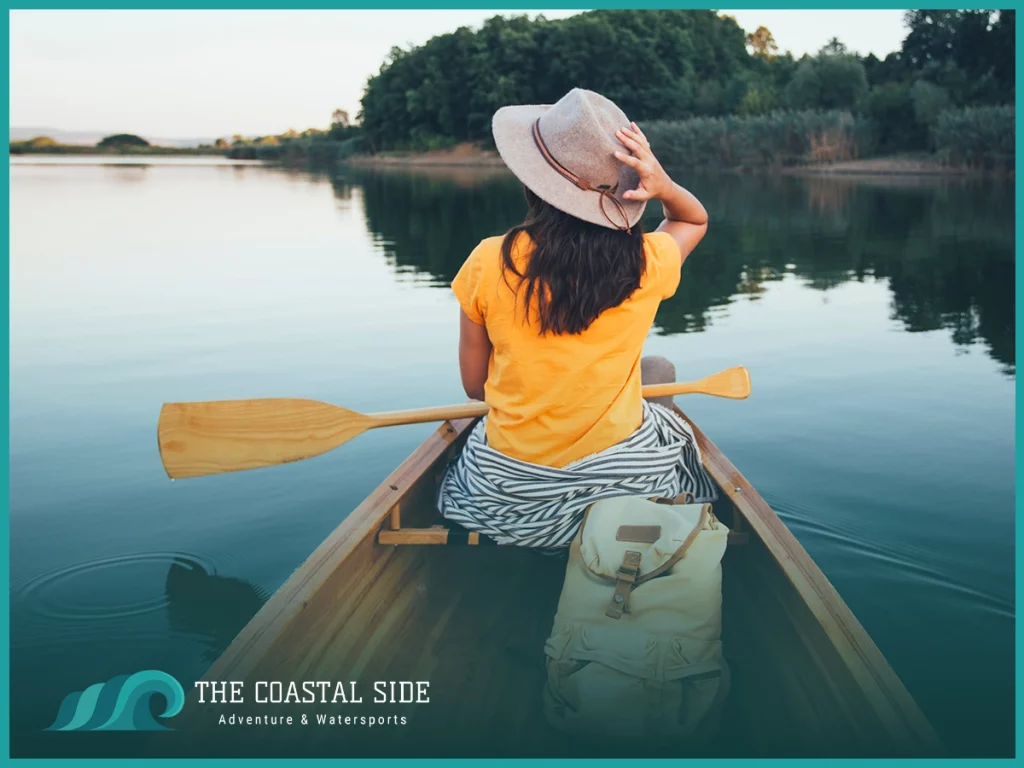
Canoeing Pros:
- Most canoes are larger and hold more people than kayaks, making them ideal for groups or families.
- Canoes hold more gear than kayaks.
- Canoeing is an excellent activity for those who want to enjoy the scenery and take things at a slower pace.
- Recreational canoes provide more stability than kayaks, making them ideal for beginners or those who want a flat-water experience.
- The higher position in a canoe improves views of surrounding nature.
- If fishing from a canoe, you can add a motor.
- Portaging, carrying a canoe overland to access a different water section, is easier with a canoe. A canoe makes it less of a chore to unload and reload equipment.
Canoeing Cons:
- Most canoes are broader and slower than kayaks, and it can be challenging to maneuver a canoe if you are paddling alone.
- Paddlers are more exposed to the elements in a canoe.
- Canoes are more difficult to turn and maneuver with a single-blade paddle, but straight-line canoe tracking is generally easy in normal conditions.
What Is Kayaking?
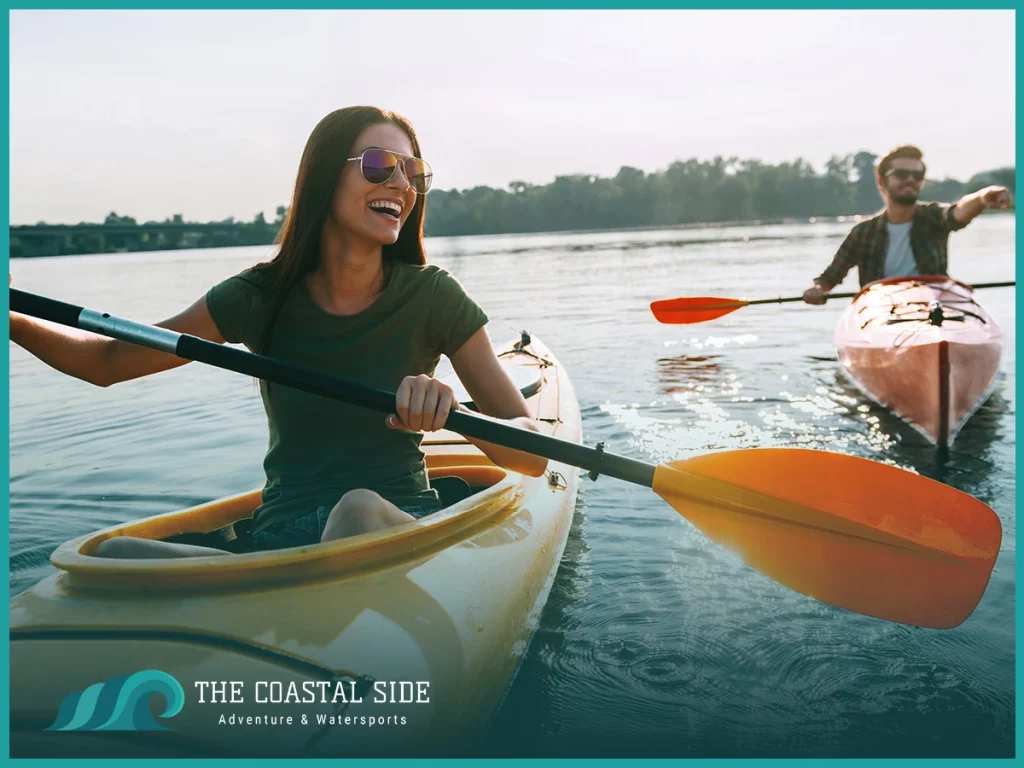
In kayaking, you sit inside the boat with your legs extended and use a double-bladed paddle to move forward. Sit-on-top kayaks are available, but they are not as common. Most recreational kayaks are closed-top boats. Kayakers sit lower in kayaks with their legs extended in front of them.
Although there are tandem kayaks, most kayakers prefer to kayak in their own kayak with friends or other members of the group kayaking in their own kayaks. This is unlike canoeing where you will generally see two or more people paddling the boat.
Kayak pros are often adventurous and enjoy going faster and navigating through rougher waters. Recreational kayaks are often lighter and easier to maneuver, making them a good choice for those who want to explore independently.
Kayak Features
- Kayaks have lower sides, making them easier to roll over if you tip them, and they are narrower and faster but less stable.
- It is more challenging to get in and out of a kayak than a canoe because you have to enter and exit through the small cockpit opening.
- An Eskimo roll is used to right a capsized kayak using your body and paddle. Kayakers need to learn advanced techniques that are impossible in a canoe.
- Sit-inside kayaks are narrower and less stable than canoes, making them better for more experienced paddlers who want a faster, more challenging experience.
- Kayaks often contain dry storage for carrying gear.
What Are the Types of Kayaks?
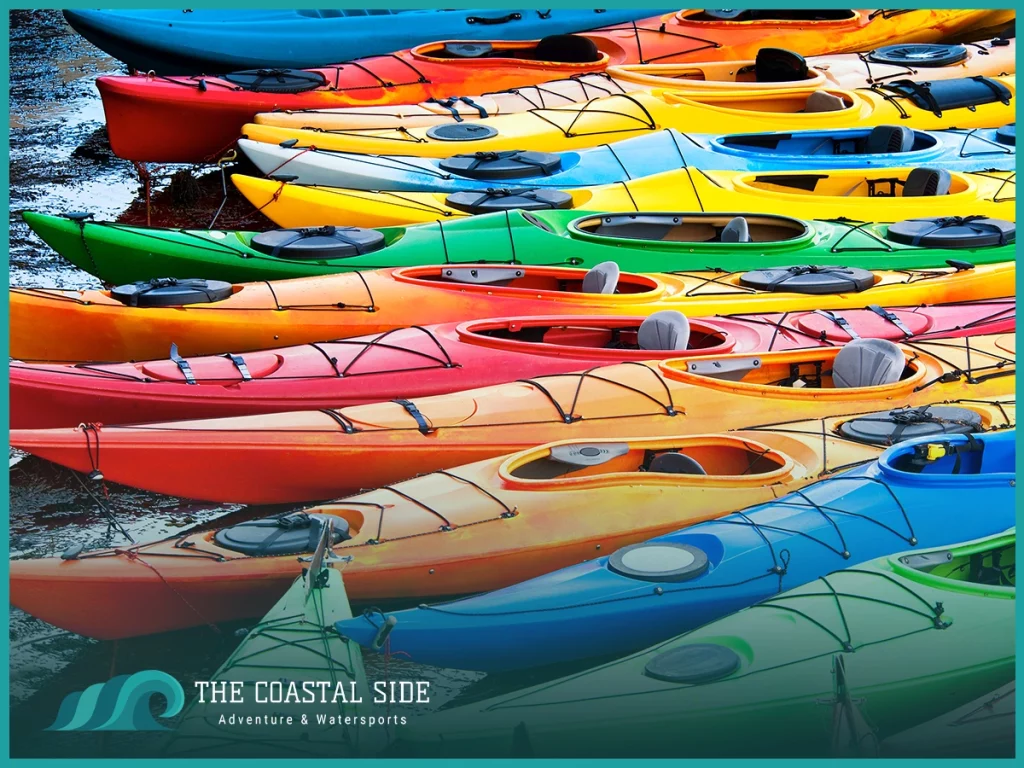
There are several main categories of kayaks:
Sit-inside kayaks
These are the most common type of kayaks. They have a closed deck in which you sit. They are suitable for paddling in colder weather because they keep you dry and protected from the elements.
Sit-on-top kayaks
These kayaks have an open cockpit on which you sit. They are good for paddling in warmer weather because they keep you cooler. They are also easier to get in and out of than sit-inside kayaks. A downside of sit-on-top kayaks is that you will get wet.
Inflatable kayaks
Inflatable kayaks consist of air-filled chambers that you inflate with a pump. They are good for paddling in calm waters and are easy to transport and store.
Whitewater kayaks
These boats are more stable than recreational kayaks due to the danger of capsizing in rapids. Whitewater kayaks feature water displacement designs to help with movement through rough water.
Racing kayaks
Racing kayaks have rudders to assist with steering and require less effort to move in a straight line. These are the least stable kayaks because they are designed for speed, not distance, like a sea kayak. Racing kayaks must be identical within the same race, meaning no variations in length and width.
Expedition kayaks
Expedition kayaks are essentially sea kayaks. They are designed for long voyages and can be mounted with sails.
What Are Some Pros and Cons of Kayaking?
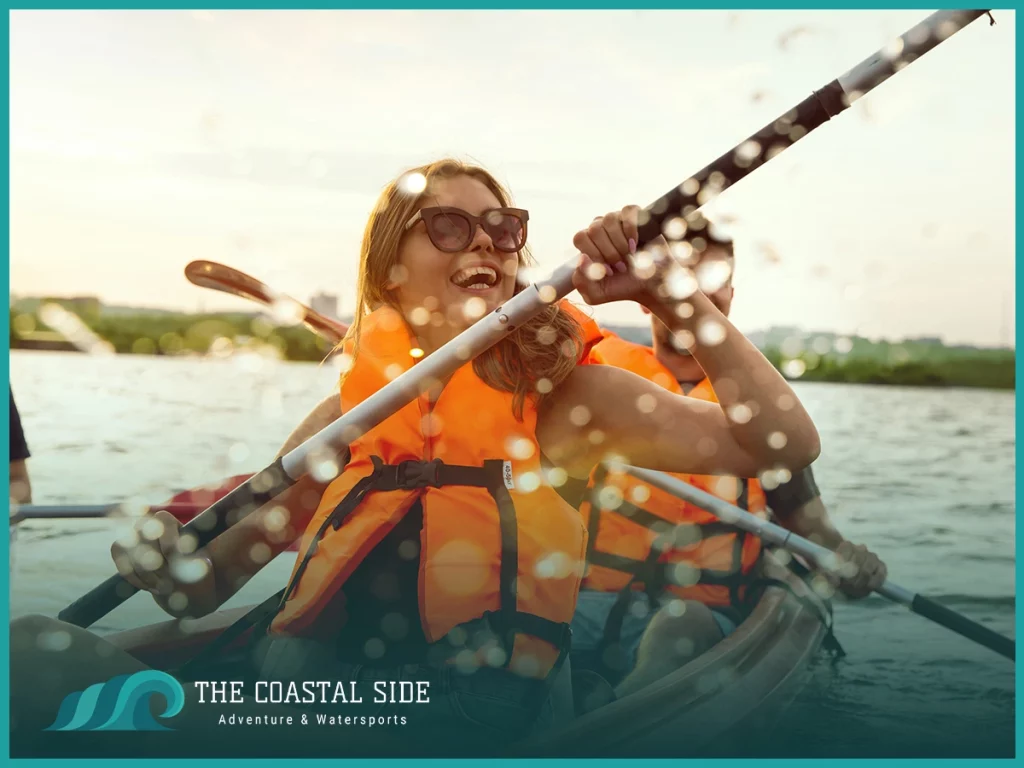
Kayaking Pros:
- Kayaking can be more adventurous and allow you to go faster and explore more challenging waters.
- Recreational kayaks are often lighter and easier to maneuver than canoes, making them a good choice for those who want to explore independently.
- Kayakers have more control over their boat due to the sit-in/closed cockpit design.
- Kayaking is a fun way to burn lots of calories. Kayaking increases strength and muscle tone. Working the paddle tones your entire upper body.
- Don’t worry about your legs not seeing any action. You are constantly placing pressure on your legs to help balance and turn the boat. You will probably notice that your legs are sore when you first start kayaking.
- An average kayak has dry storage areas and is more versatile in handling rough water.
Kayaking Cons:
- Kayaks can be more difficult to enter and exit and do not have as much space for large equipment like fishing gear.
- Kayaks are narrower and less stable than canoes, making them better for more experienced paddlers.
- Kayaking can be dangerous if you are alone and overexert yourself far from shore. It takes more effort to paddle when exhausted, even in calm waters.
- Kayaking can also be hazardous if you don’t prepare for weather conditions.
Do Canoeing and Kayaking Use Different Equipment?
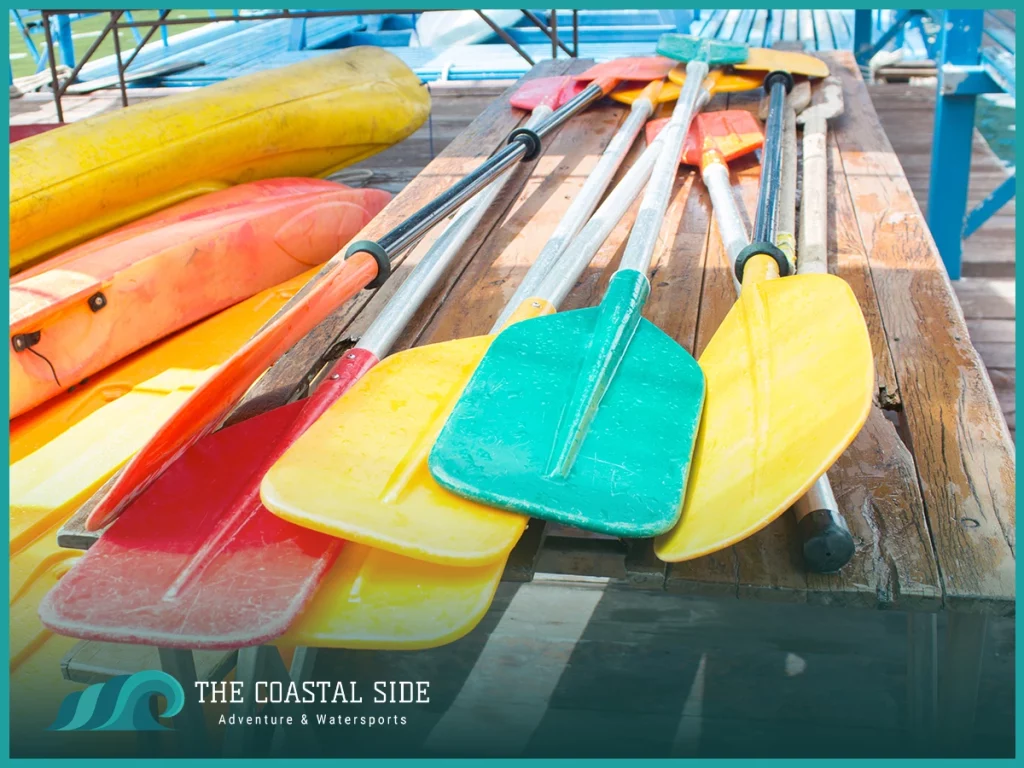
Yes, canoeing and kayaking use different equipment.
- Canoes are propelled with a single-bladed paddle, while kayak paddles are double-bladed.
- Canoe paddles have a T-shaped grip, and kayak paddles have a J-shaped grip.
- The canoe paddle is held with two hands and is used to alternate sides. You hold the kayak paddle with one hand in the middle and the other on one end. The paddler then alternates sides.
- Most kayaks also have a spray skirt, a fabric that attaches to the cockpit rim and goes around the paddler’s waist. This barrier keeps water out of the kayak and prevents the paddler from getting wet. Canoes do not have a spray skirt.
There is no right or wrong answer for canoe vs kayak. It just depends on your personal preference. Some people prefer canoeing because it is more relaxed and can enjoy the scenery more. Others prefer kayaking because it is more challenging, and they can go faster.
If you’re unsure which one to try, why not both canoeing and kayaking? They are equally awesome ways to get out on the water and have a gnarly time. Whichever one you choose, wear a life jacket and always canoe or kayak with a buddy.

